Main menu
Common skin conditions

NEWS
Join DermNet PRO
Read more
Quick links
Created 2008.
The dermoscopy 3-point checklist for early detection of skin cancer is fairly easy to learn and has a high sensitivity for melanoma. (1) There a high likelihood of malignancy (melanoma or basal cell carcinoma) if a pigmented skin lesion has any two of these criteria. The 3-point checklist has been designed to allow non-experts not to miss detection of melanomas. However, it is not as specific as pattern analysis (described in a later section).
The main aim of the 3-point checklist is to determine whether the lesion being examined should undergo a biopsy. It does not an require accurate diagnosis to be made as the finer features of the lesion are not examined.
Score = 0 Score = 1 Score = 2 Score = 3 
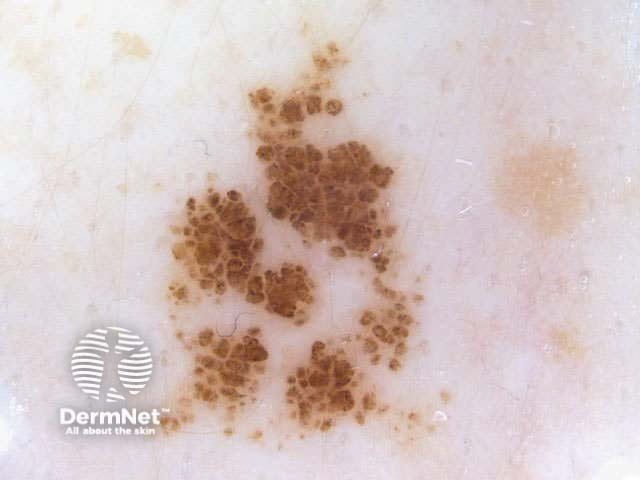
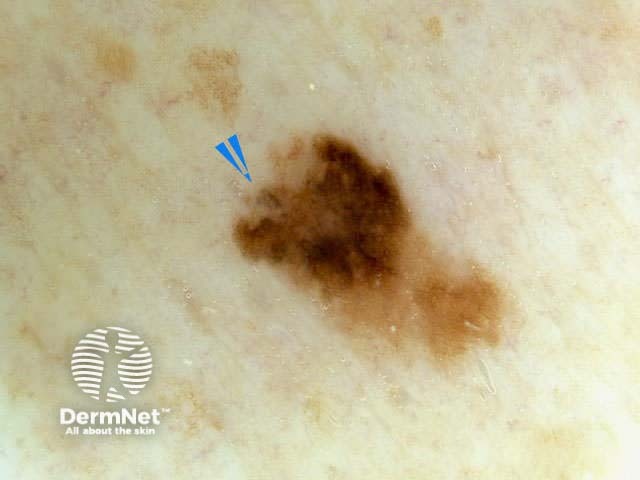
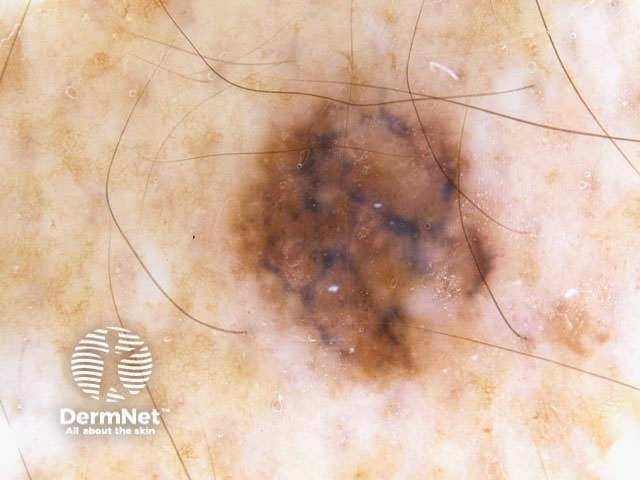
The following lesions demonstrate approximate symmetry of colour and structure. Shape is not considered.
Cherry angioma Compound naevus Compound naevus Cellular naevus Solar lentigo Plantar naevus Benign naevus Seborrhoeic keratosis 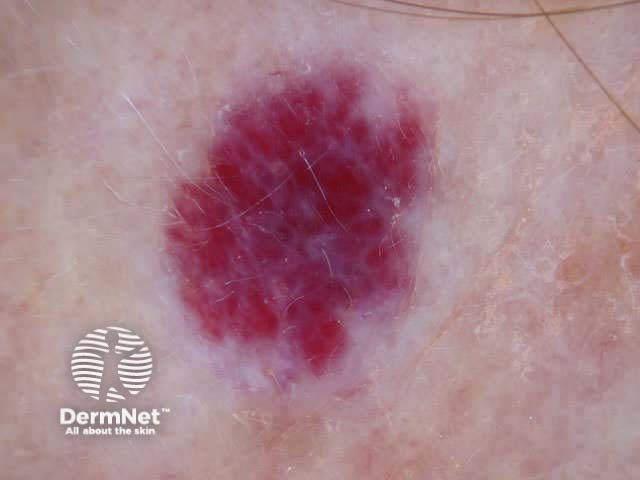
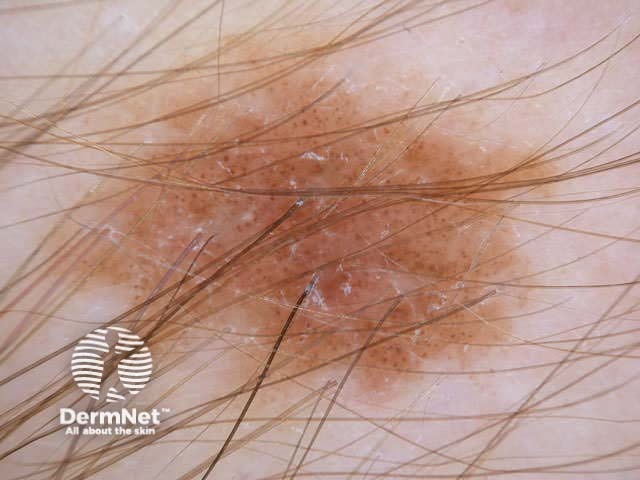
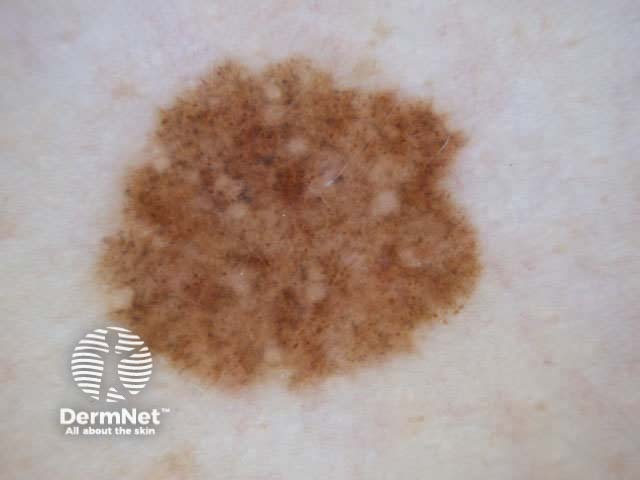
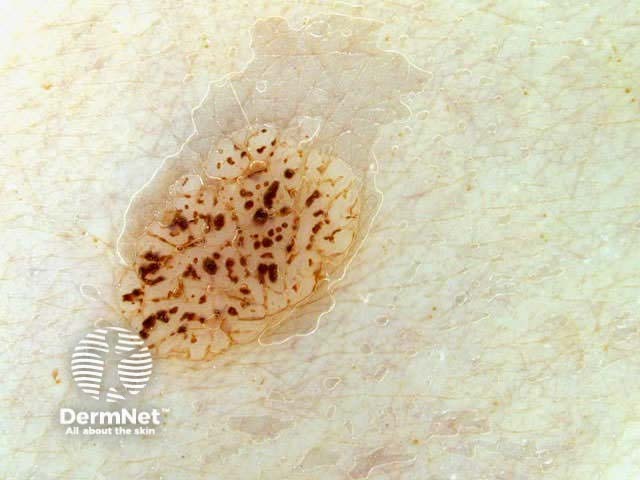

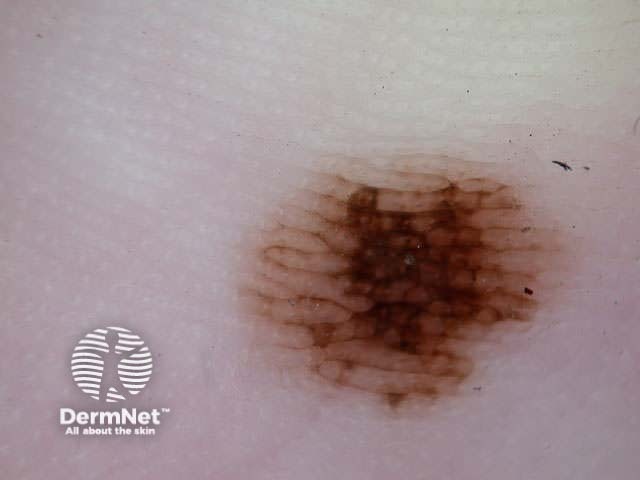
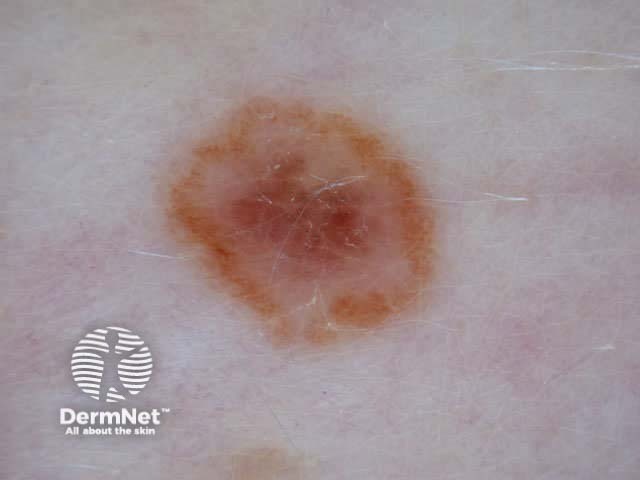

The lesions below demonstrate asymmetry of colour or structure in one or two axes. Not all asymmetrical lesions are malignant.
Melanoma in situ Melanoma in situ Invasive melanoma Basal cell carcinoma Plantar naevus Seborrhoeic keratosis Lentigo simplex Congenital naevus 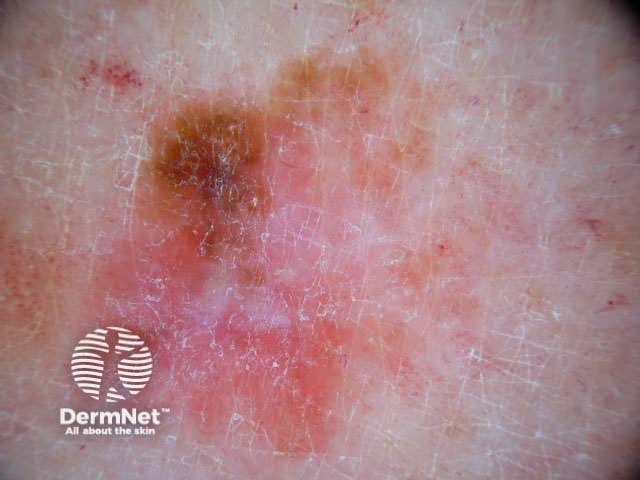
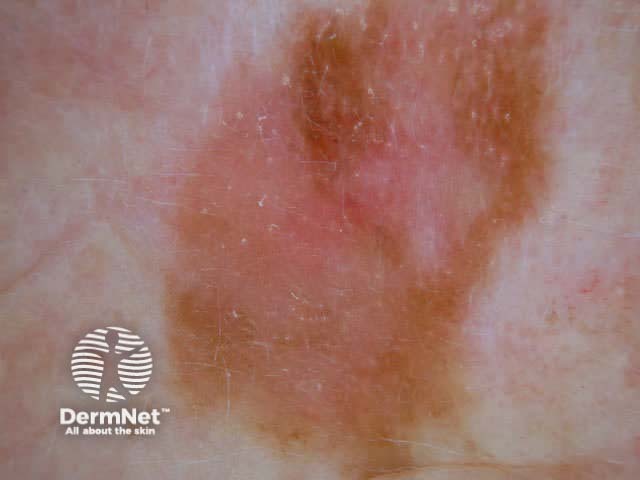

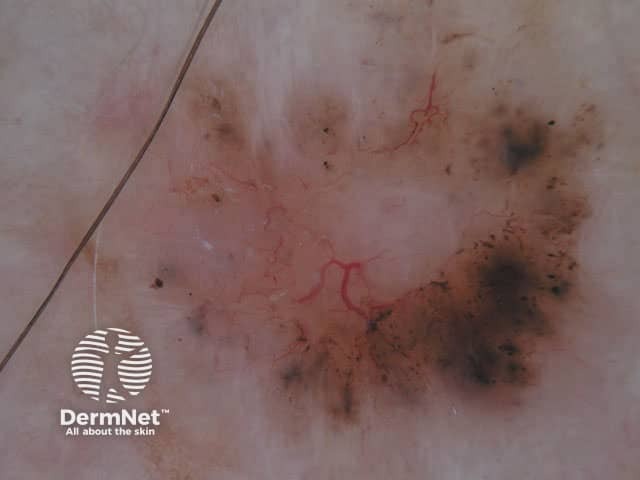
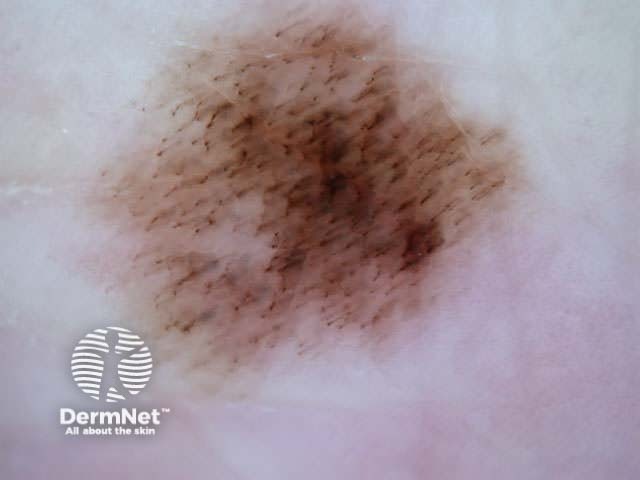
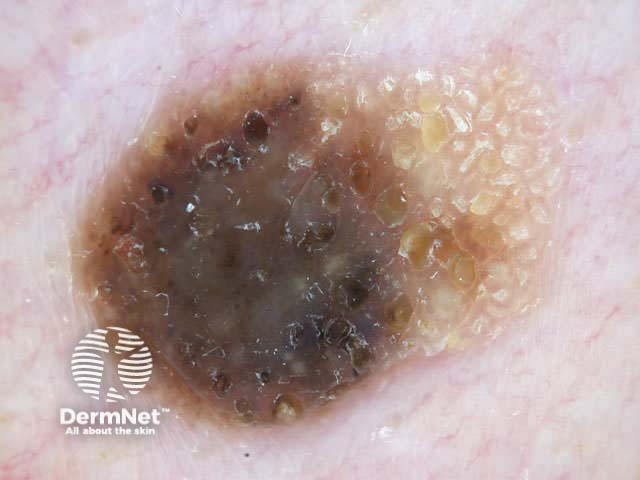
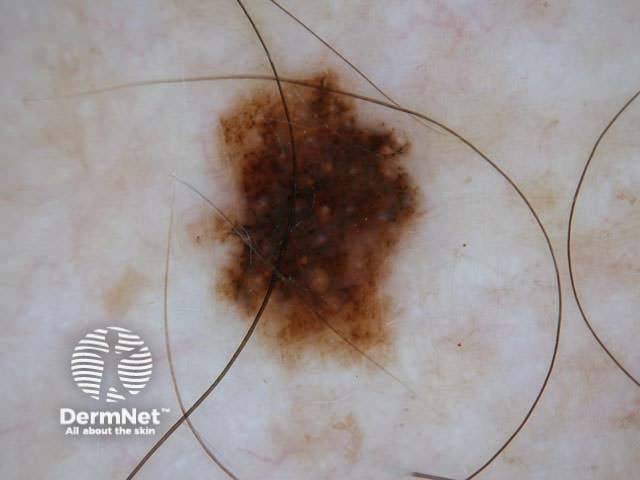
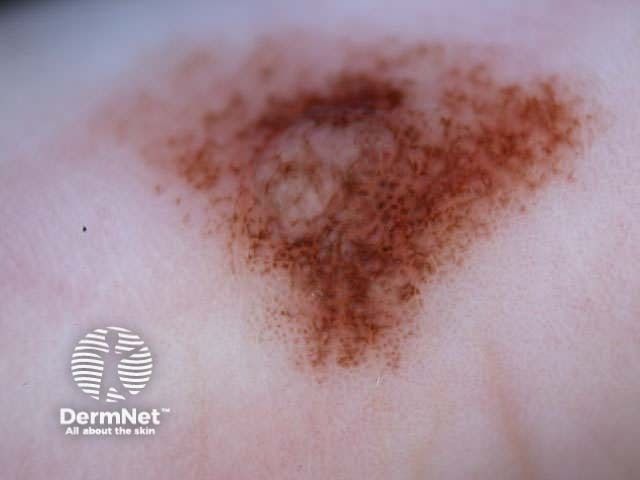
The following lesions are considered to have typical pigment network.
Junctional naevus Ephilis Benign naevus Junctional naevus Ink spot naevus Plantar naevus Facial lentigo Dermatofibroma 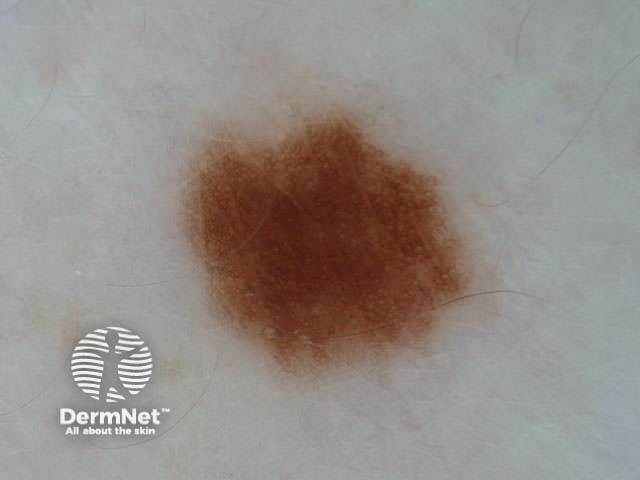
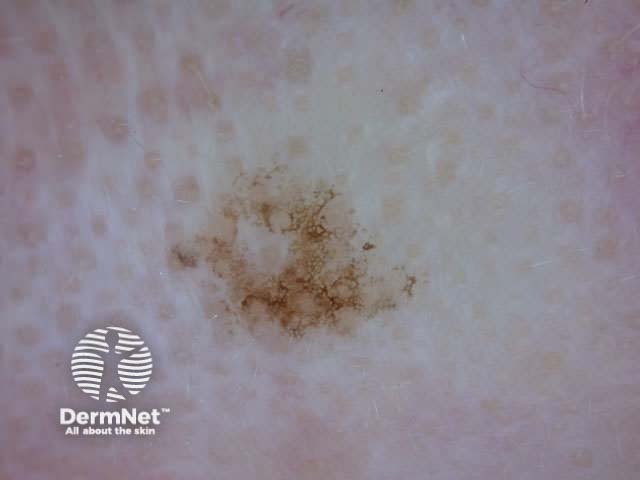
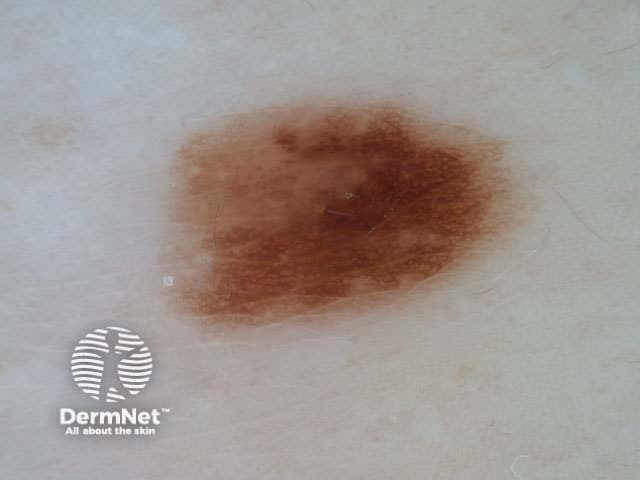

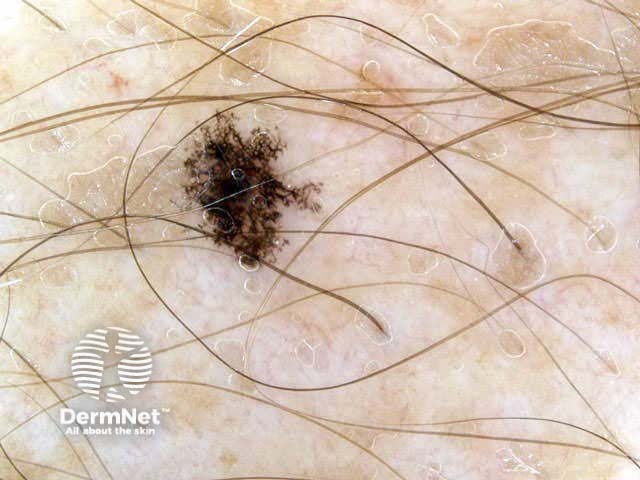
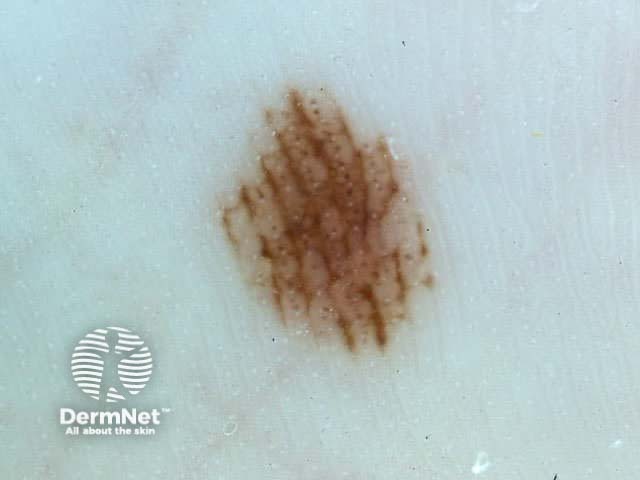
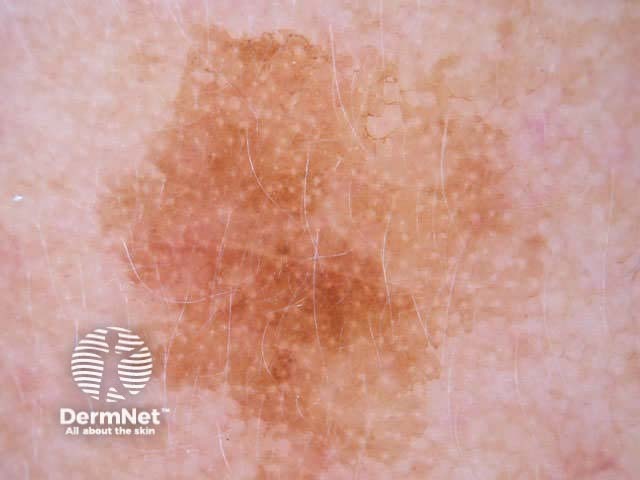
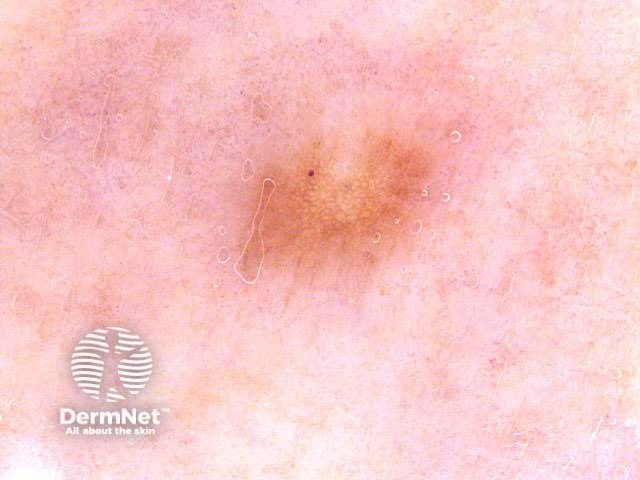
The lesions below have atypical pigment network, with irregular holes and thick lines (broadened network). Streaming or pseudopods would also be considered atypical. Not all lesions with atypical network prove to be malignant.
Melanoma Lentigo maligna Melanoma in situ Lentigo maligna Melanoma Lentigo maligna Lentigo maligna Atypical naevus 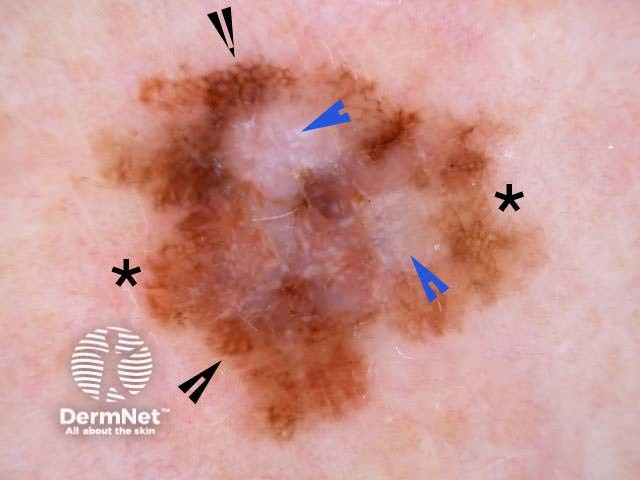
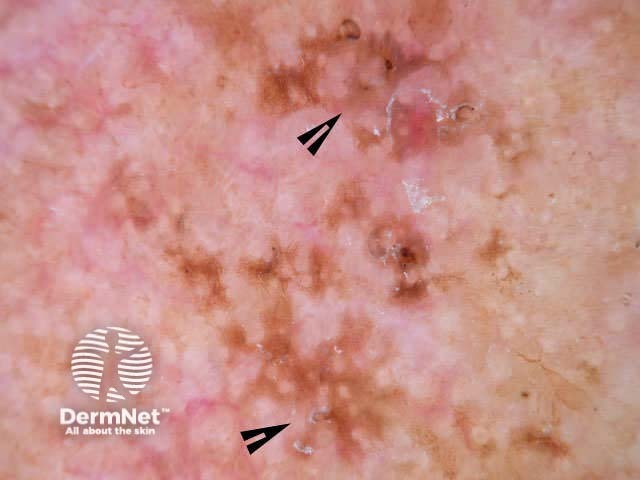
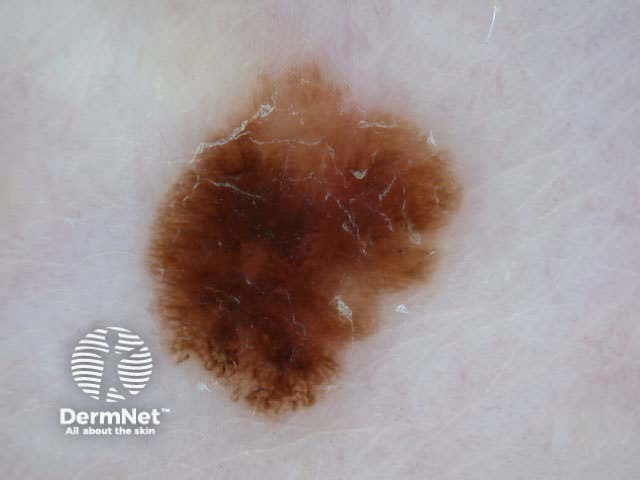
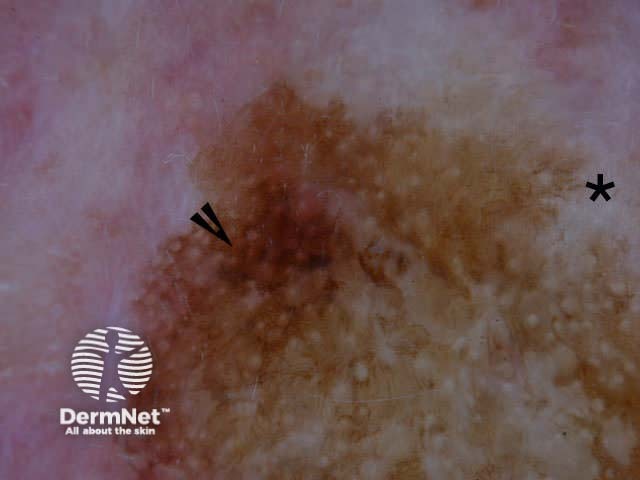
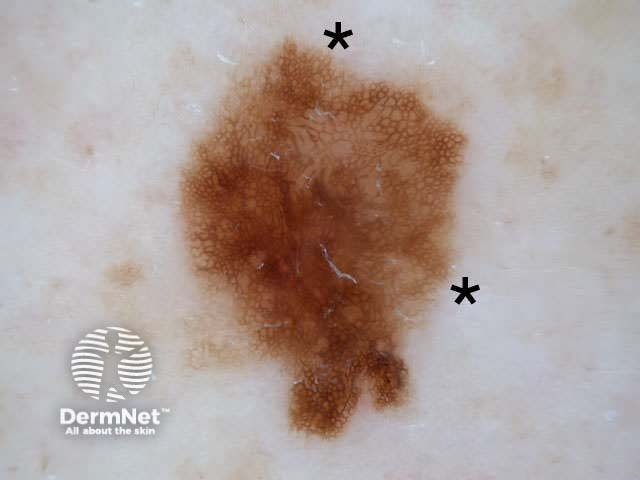
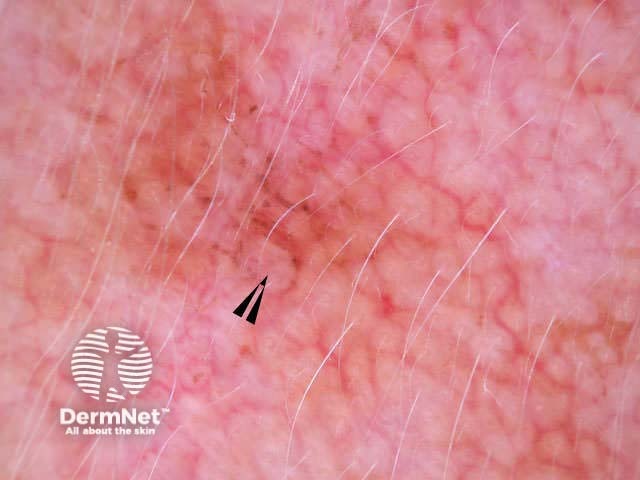
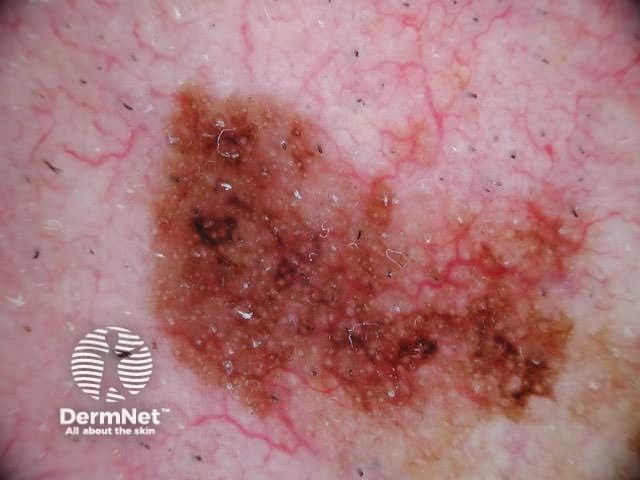
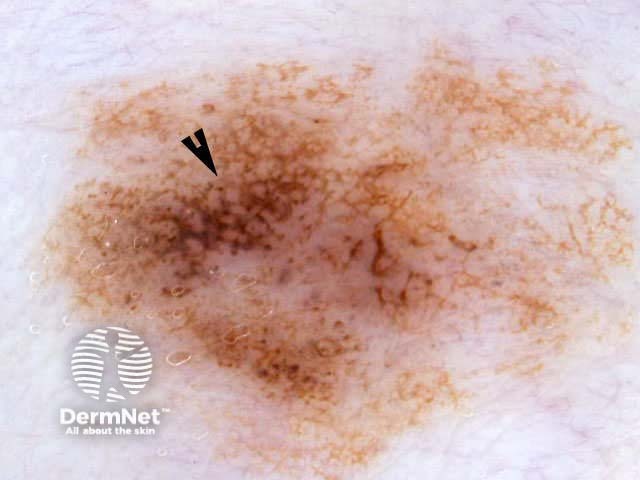
Blue-white structures can refer to any type of blue and/or white colour, i.e. combination of blue-white veil and regression structures, as shown in the following pictures. The colour can be subtle. Not all lesions with blue-white structures are malignant.
Melanoma Basal cell carcinoma Melanoma Lentigo maligna Congenital naevus Blue naevus Dysplastic naevus Dysplastic naevus 
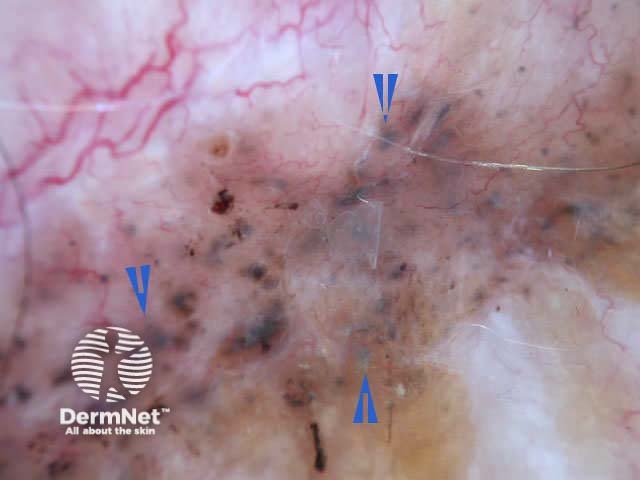
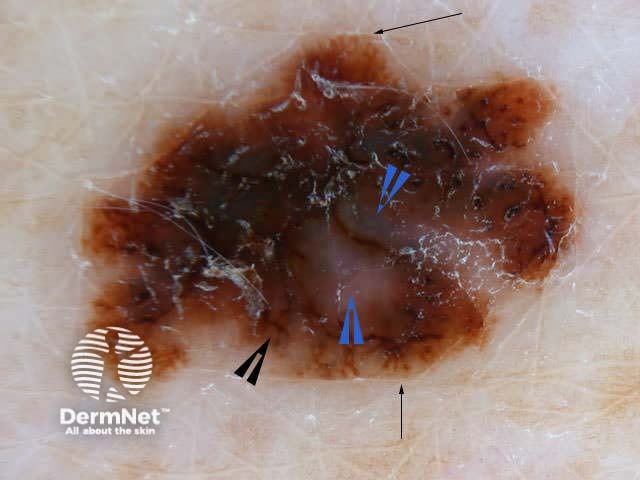
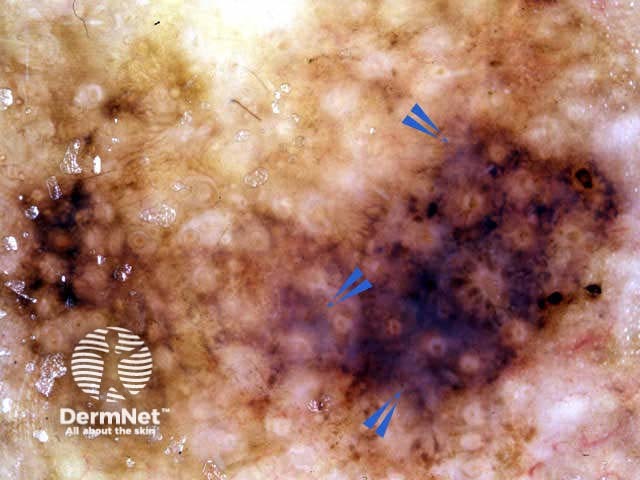
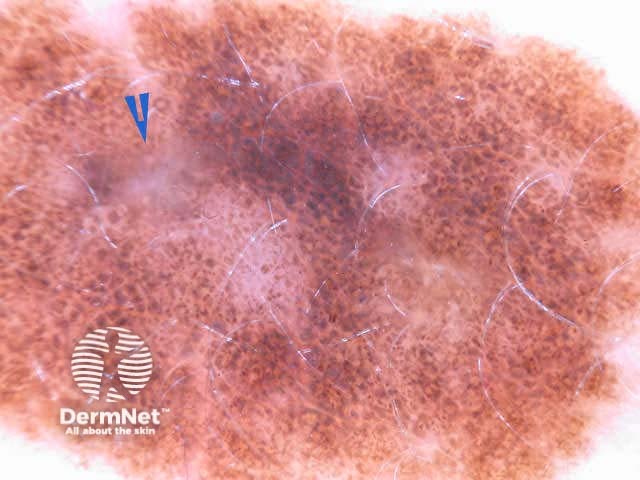
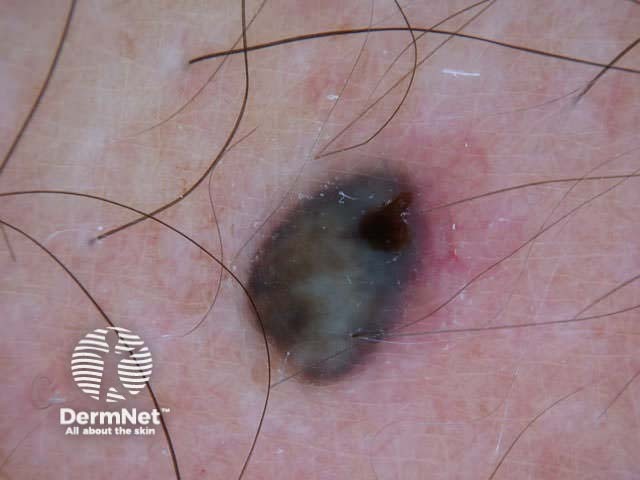
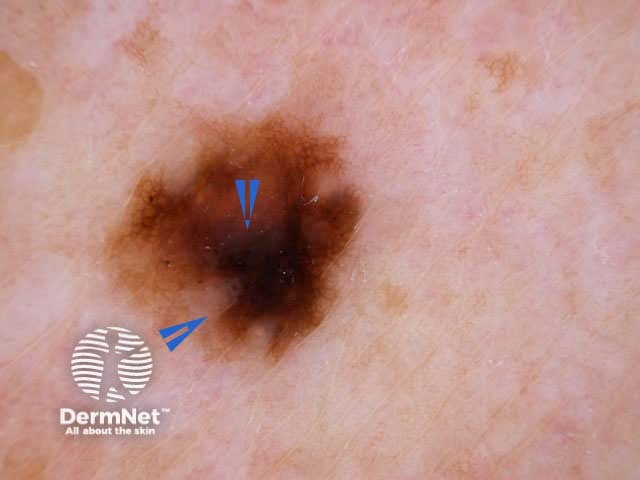
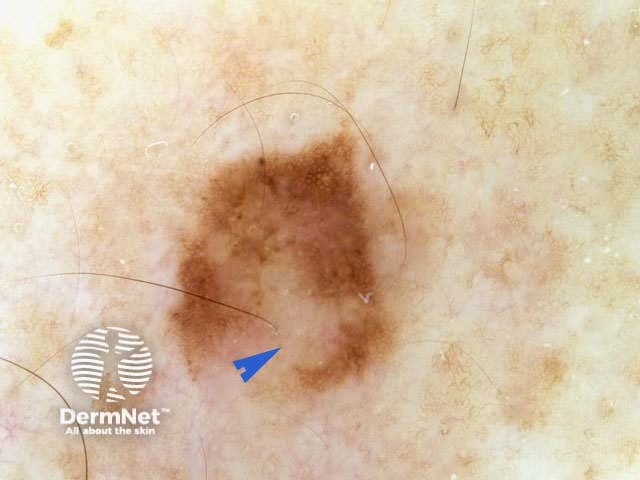
Practice dermoscopy, evaluating skin lesions using the 3-point checklist.
See the DermNet bookstore.